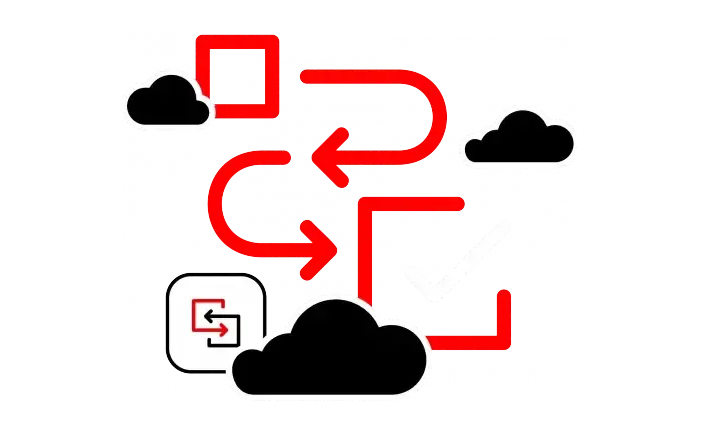Use cases and migration paths for Migration Toolkit for Applications
Ease the adoption of Red Hat OpenShift or Red Hat Application Foundations with the Migration Toolkit for Applications. With containerization-readiness, source-code analysis, and project management capabilities this tool can help your organization benefit from faster, safer legacy application modernization.

We've summarized the most commonly used migration paths in the following table.
Source platform | Targets | ||||||||
| Migration to JBoss EAP 7 & 8 | OpenShift (cloud readiness) | OpenJDK 11, 17, & 21 | Jakarta EE 9 | Camel 3 & 4 | Spring Boot in Red Hat Runtimes | Quarkus | Open Liberty | Azure App Service for EAP apps | |
| Oracle WebLogic Server | ✔ | ✔ | ✔ | - | - | - | - | - | - |
| IBM WebSphere Application Server | ✔ | ✔ | ✔ | - | - | - | - | ✔ | - |
| JBoss EAP 4 | ✘ [1] | ✔ | ✔ | - | - | - | - | - | - |
| JBoss EAP 5 | ✔ | ✔ | ✔ | - | - | - | - | - | - |
| JBoss EAP 6 | ✔ | ✔ | ✔ | - | - | - | - | - | - |
| JBoss EAP 7 | ✔ | ✔ | ✔ | - | - | - | - | - | ✔ |
| Thorntail | ✔ [2] | - | - | - | - | - | - | - | - |
| Oracle JDK | - | ✔ | ✔ | - | - | - | - | - | - |
| Camel 2 | - | ✔ | ✔ | - | ✔ | - | - | - | - |
| Camel 3 | - | - | - | - | ✔ | - | - | - | - |
| Spring Boot | - | ✔ | ✔ | ✔ | - | ✔ | ✔ | - | - |
| Any Java application | - | ✔ | ✔ | - | - | - | - | - | - |
| Any Java EE application | - | - | - | ✔ | - | - | ✔ | - | - |
| [1] Although the migration toolkit for applications does not currently provide rules for this migration path, Red Hat Consulting can assist with migration from any source platform. | |||||||||
| [2] Requires JBoss Enterprise Application Platform expansion pack 2 (EAP XP 2) | |||||||||
